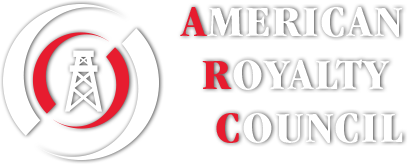That the abbreviation for a barrel of oil, “bbl,” actually stands for “blue barrel?” The word “barrel” only has one “b,” so why is the abbreviation for a barrel of petroleum “bbl?” In the early 1860’s, when oil production began, there was no standard container for oil, so oil and petroleum products were stored and transported in barrels of all different shapes and sizes (beer barrels, fish barrels, molasses barrels, turpentine barrels, etc.). By the early 1870’s, the 42-gallon barrel had been adopted as the standard for oil trade. This was 2 gallons per barrel more than the 40-gallon standard used by many other industries at the time. The extra 2 gallons was to allow for evaporation and leaking during tranport (most barrels were made of wood). Standard Oil began manufacturing 42 gallon barrels that were blue to be used for transporting petroleum. The use of a blue barrel, abbreviated “bbl,” guaranteed a buyer that this was a 42-gallon barrel.
That natural gas is odorless, but has an organic compound called mercaptan added to give it an odor?That way, you can detect possible leaks!
What do these things have in common: ink, crayons, bubble gum, dishwashing liquid, deodorant, eyeglasses, tires, and heart valves? They are ALL made from petroleum! Americans consume petroleum products at a rate of three-and-a-half gallons of oil and more than 250 cubic feet of natural gas each day! But, as shown below, petroleum is not just used for fuel! Following is a partial list of products made from petroleum (144 of 6,000 items!):
One 42-gallon barrel of oil creates 19.4 gallons of gasoline.
The rest (over half) is used to make things such as:
| Solvents | Diesel | Motor Oil | Bearing Grease |
| Ink | Floor Wax | Ballpoint Pens | Football Cleats |
| Upholstery | Sweaters | Boats | Insecticides |
| Bicycle Tires | Sports Car Bodies | Nail Polish | Fishing lures |
| Dresses | Tires | Golf Bags | Perfumes |
| Cassettes | Dishwasher | Tool Boxes | Shoe Polish |
| Motorcycle Helmet | Caulking | Petroleum Jelly | Transparent Tape |
| CD Player | Faucet Washers | Antiseptics | Clothesline |
| Curtains | Food Preservatives | Basketballs | Soap |
| Vitamin Capsules | Antihistamines | Purses | Shoes |
| Dashboards | Cortisone | Deodorant | Footballs |
| Putty | Dyes | Panty Hose | Refrigerant |
| Percolators | Life Jackets | Rubbing Alcohol | Linings |
| Skis | TV Cabinets | Shag Rugs | Electrician’s Tape |
| Tool Racks | Car BatteryCases | Epoxy | Paint |
| Mops | Slacks | Insect Repellent | Oil Filters |
| Umbrellas | Yarn | Fertilizers | Hair Coloring |
| Roofing | Toilet Seats | Fishing Rods | Lipstick |
| Denture Adhesive | Linoleum | Ice Cube Trays | Synthetic Rubber |
| Speakers | Plastic Wood | Electric Blankets | Glycerin |
| Tennis Rackets | Rubber Cement | Fishing Boots | Dice |
| Nylon Rope | Candles | Trash Bags | House Paint |
| Water Pipes | Hand Lotion | Roller Skates | Surf Boards |
| Shampoo | Wheels | Paint Rollers | Shower Curtains |
| Guitar Strings | Luggage | Aspirin | Safety Glasses |
| Antifreeze | Football Helmets | Awnings | Eyeglasses |
| Clothes | Toothbrushes | Ice Chests | Footballs |
| Combs | CD’s | Paint Brushes | Detergents |
| Vaporizers | Balloons | Sun Glasses | Tents |
| Heart Valves | Crayons | Parachutes | Telephones |
| Enamel | Pillows | Dishes | Cameras |
| Anesthetics | Artificial Turf | Artificial limbs | Bandages |
| Dentures | Model Cars | Folding Doors | Hair Curlers |
| Cold cream | Movie film | Soft Contact lenses | Drinking Cups |
| Fan Belts | Car Enamel | Shaving Cream | Ammonia |
| Refrigerators | Golf Balls | Toothpaste | Gasoline |
That crude oil comes from plant and animal material that died millions of years ago? Heat and pressure turned the matter into a thick dark liquid. Crude oil is also called petroleum or fossil fuel.
That crude oil and natural gas are found deep in the ground trapped in pools between layers of rocks?
That the term petroleum comes from the Latin stems petra, “rock,” and oleum, “oil” – “rock oil.” It is used to describe a broad range of hydrocarbons that are found as gases, liquids, or solids beneath the surface of the earth. The two most common forms are natural gas and crude oil.
That there are three different types of crude oil:
Heavy Crude – which is dark, thick and sticky
Medium Crude –
Light Crude – which is a light, golden color and flows easily



